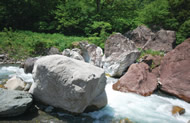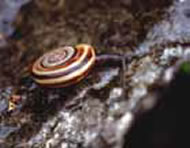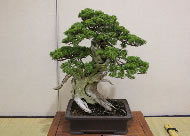- Takanami-no-ike Pond Highland Lodge

Road & Geosite Conditions
Partially Accessible

- Number
- Area
- 1. Ichiburi Geosite
- 2. Oyashirazu Geosite
- 3. Omi Coast Geosite
- 4. Omigawa Jade Gorge Geosite
- 5. Imai Geosite
- 6. Itoigawa-Shizuoka Tectonic Line and Salt Trail(North) Geosite
- 7. Maikomidaira Geosite
- 8. Hashidate Gold Mine Geosite
- 9. Kotakigawa Jade Gorge Geosite
- 10. Tsugami Shindo Geosite
- 11. Himekawa Gorge Via Oito Line Geosite
- 12. Itoigawa-Shizuoka Tectonic Line and Salt Trail(South) Geosite
- 13. Himekawa Gorge Geosite
- 14. Renge Geosite
- 15. Itoigawa Coast Geosite
- 16. Miyama Park and Museums Geosite
- 17. Tsukimizunoike Geosite
- 18. Umidani Gorge Geosite
- 19. Amakazariyama Geosite
- 20. Yakeyama Geosite
- 21. Benten-iwa Geosite
- 22. Shindosan Geosite
- 23. Gongendake Geosite
- 24. Tsutsuishi Hamatokuai Geosite
- Jade
- 1. Ichiburi Geosite
- 2. Oyashirazu Geosite
- 3. Omi Coast Geosite
- 4. Omigawa Jade Gorge Geosite
- 9. Kotakigawa Jade Gorge Geosite
- 15. Itoigawa Coast Geosite
- 16. Miyama Park and Museums Geosite
- Fossa Magna
- 5. Imai Geosite
- Itoigawa-Shizuoka Tectonic Line and Salt Trail(North) Geosite
- 11. Himekawa Gorge Via Oito Line Geosite
- 12. Itoigawa-Shizuoka Tectonic Line and Salt Trail(South) Geosite
- 13. Himekawa Gorge Geosite
- 17. Tsukimizunoike Geosite
- 21. Benten-iwa Geosite
- 22. Shindosan Geosite
- 24. Tsutsuishi Hamatokuai Geosite
- Mountainous areas
- 7. Maikomidaira Geosite
- 8. Hashidate Gold Mine Geosite
- 10. Tsugami Shindo
- 14. Renge Geosite
- 18. Umidani Gorge Geosite
- 19. Amakazariyama Geosite
- 20. Yakeyama Geosite
- 23. Gongendake Geosite

In 1939, the Kotakigawa Jade Gorge was academically confirmed the first natural source of jade in Japan. This had a profound effect on the fields of archaeology and geology. It was at this point when scientists confirmed that jade artifacts found in archaeological sites all over Japan originated not from the mainland as previously thought but in Itoigawa, which would from that point on be called "The Birthplace of Jade."
The giant stone face of Mt. Myojo that towers 400 meters over the gorge was formed about 300 million years ago from petrified coral reef—many coral and sea lily fossils can be found within its rock. During fair weather, this wall is a popular challenge for rock climbers. Below Mt. Myojo, one can see large deposits of jade washed by the clear waters of the Kotakigawa River. The colors of changing seasonal foliage paint a beautiful scene on the white walls of Mt. Myojo, making the view here breathtakingly beautiful.
Nearby Takanami-no-ike Pond, produced by a landslide from Mt. Akahageyama, is said by locals to be the home of a giant fish they've named 'Namitaro.' Behind the pond are the remains of the Kotaki Coal Mine, which operated during the first half of the 20th century. The pond itself is a very popular space for camping, walking, picnicking, or just relaxing with family and friends. The nearby Jade Gorge Fishing Park also offers the opportunity to fish for common mountain stream fish like char and rainbow trout.
 Mt. Myojo
Mt. Myojo

Mt. Myojo, with its massive face of white limestone, was formed from coral reefs which date back at least 300 million years and so it contains a wide variety of marine fossils. The mountain was originally located south of here, but tectonic movement carried it to its current home. The peak, located behind the rock wall, is at an elevation of 1188m. The rock wall itself is about 450m high and is extremely popular with rock climbers due to its size and easy access.
 Kotakigawa Jade Gorge
Kotakigawa Jade Gorge

The Kotakigawa River winds through this gorge along the foot of Mt. Myojo and, as its name suggests, it is home to large jade deposits.
Until fairly recently, jade artifacts excavated in Japan had been assumed to be imported from trade links with mainland Asia. However, discovery of the large jade deposits here in 1938, coupled with the discovery of large jadeworking villages throughout the Itoigawa region, completely overturned this theory. Now evidence suggests that most if not all of these jade artifacts were produced here and distributed across the country.
The Kotakigawa Jade Gorge has been designated as a National Natural Monument and as such the removal or damage of any plants, animals, or minerals from the area is strictly prohibited. If you would like to collect mineral specimens, we recommend hunting for pebbles along one of Itoigawa's many coastal sites.
 Takanami-no-ike Pond
Takanami-no-ike Pond

At an elevation of 540m, Takanami-no-ike Pond was formed when a landslide off neighboring Mt. Akahageyama created a natural dam. According to local folk legends, a massive fish of unknown species named "Namitaro" lives in this pond. Around the pond are hiking trails, a campsite, restaurant, and a shop which sells local produce and gifts.
On clear days, the view of Mt. Myojo from across the pond is among the most beautiful sights in the Geopark.
 Jade Gorge Fishing Park
Jade Gorge Fishing Park

For conservation reasons, fishing in natural streams is restricted in Japan to those who obtain appropriate licenses and permission. This fishing park may be man-made, but it uses water diverted from a natural stream to provide an authentic experience. Enjoy fishing for char and rainbow trout here, then barbecue your fish at the provided fire pits.
A variety of equipment and bait is available for rent and sale.
Kotaki Coal Mine Site

Near Takanami-no-ike Pond, a coal mine operated from early 1900 until 1951. At the peak of its activity from the 1920s until the late 1940s, more than 180 miners were employed here. Some remains of the mine are still visible today.
Unique Life on Mt. Myojo

In 1971 a new species of snail was discovered on Mt. Myojo. Although listed as endangered, its numbers remain stable thanks to conservation efforts in the region.

The Itoigawa Juniper or 'shinpaku' is a shrub which grows on the rocky outcrops of Mt. Myojo. Its simple, almost rugged beauty makes it popular among bonsai enthusiasts, but poaching from its natural habitat has made it endangered so it is now protected under national law. Only hand-grown specimens are available for sale now.
Fossils of Tsuchikurazawa River

The limestone around this geosite is home to a large variety of fossils. Along the Tsuchikurazawa River is a great deal of black limestone which formed from coral reefs which existed 300 million years ago. Many different kinds of fossils can be found within this black limestone and in 2004 the oldest shark's tooth fossil in Japan was discovered here.
Route to Kotakigawa Jade Gorge Geosite
Destination:


